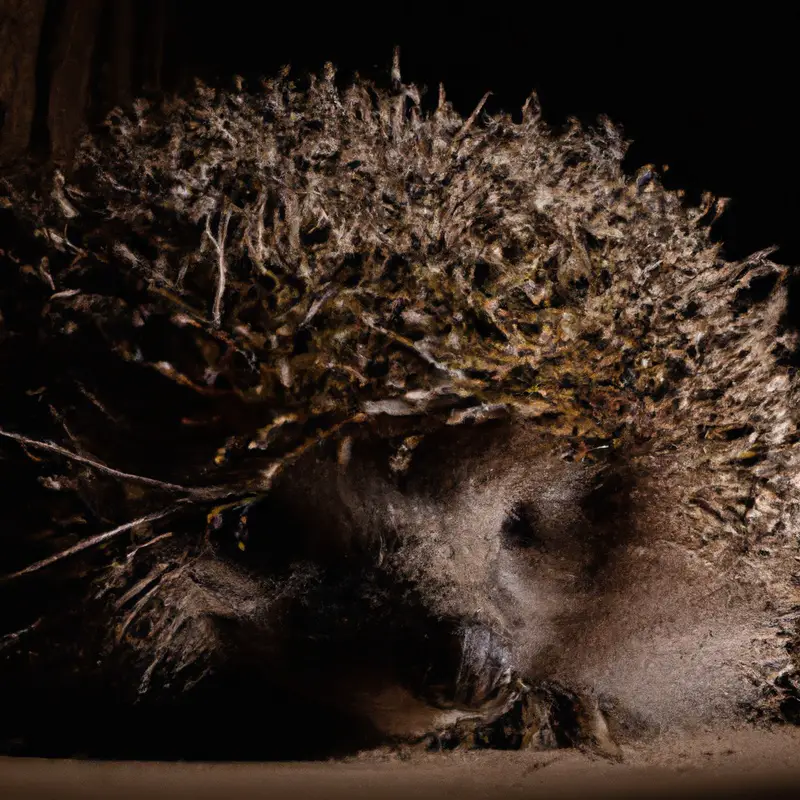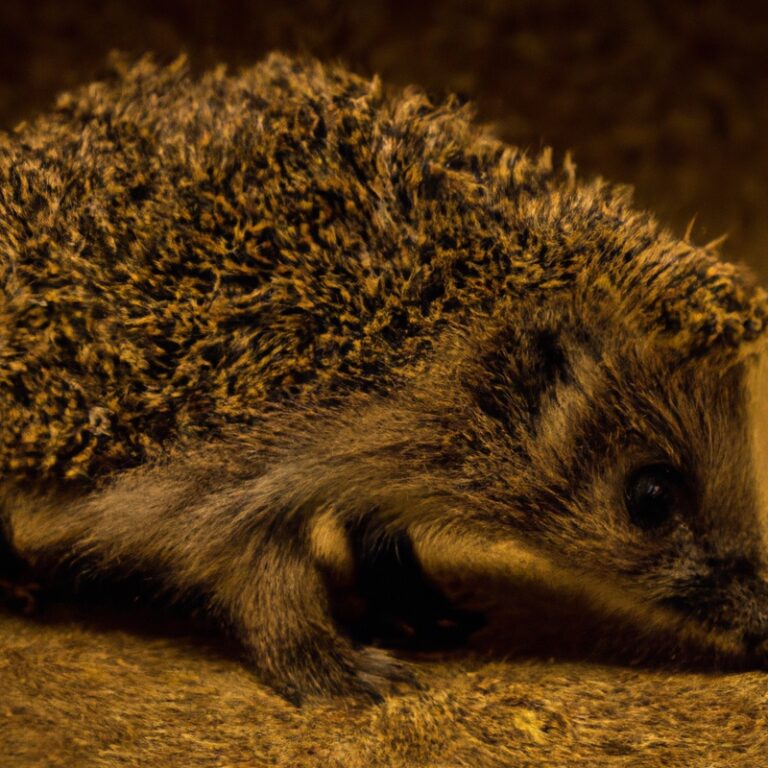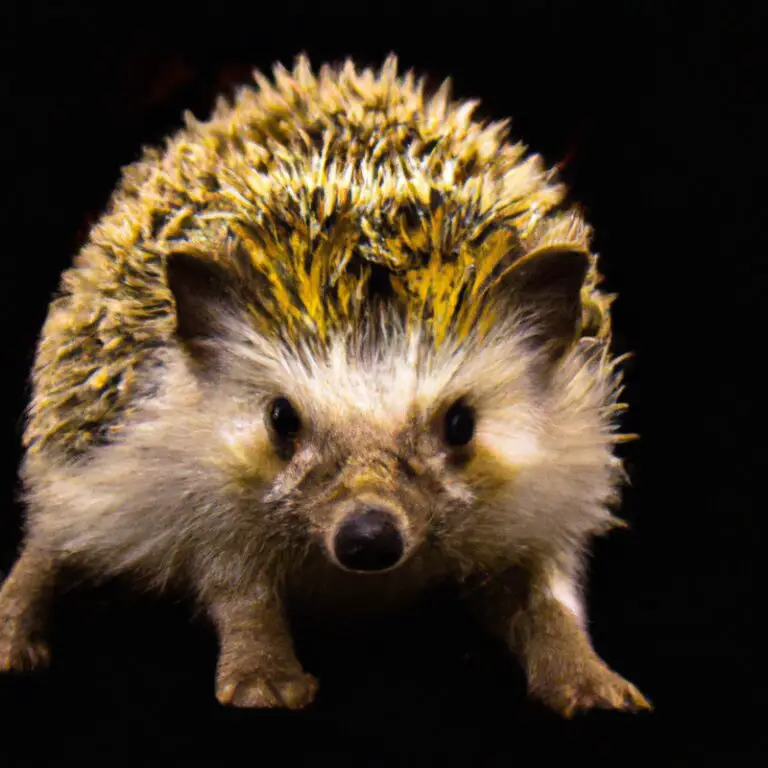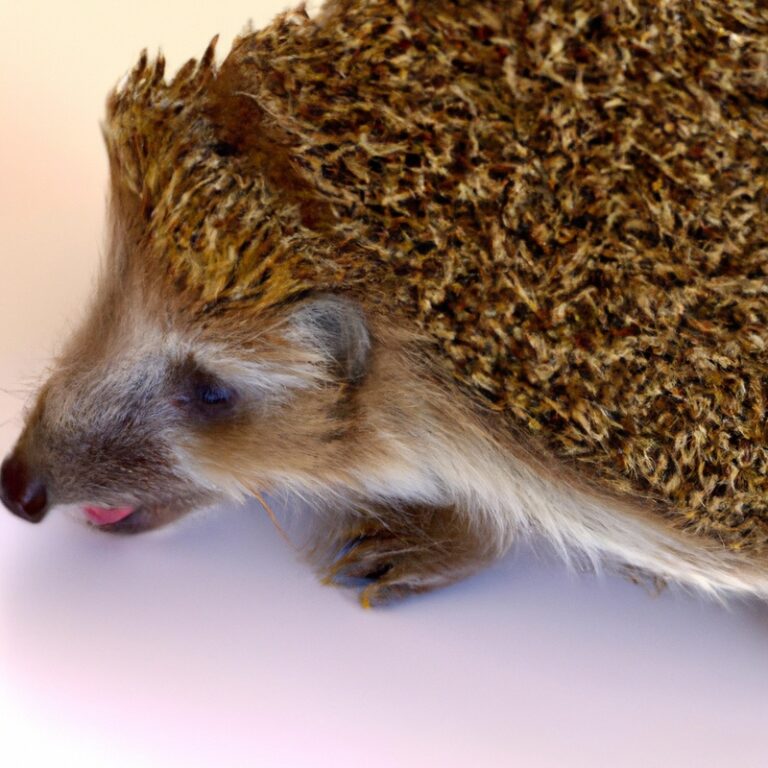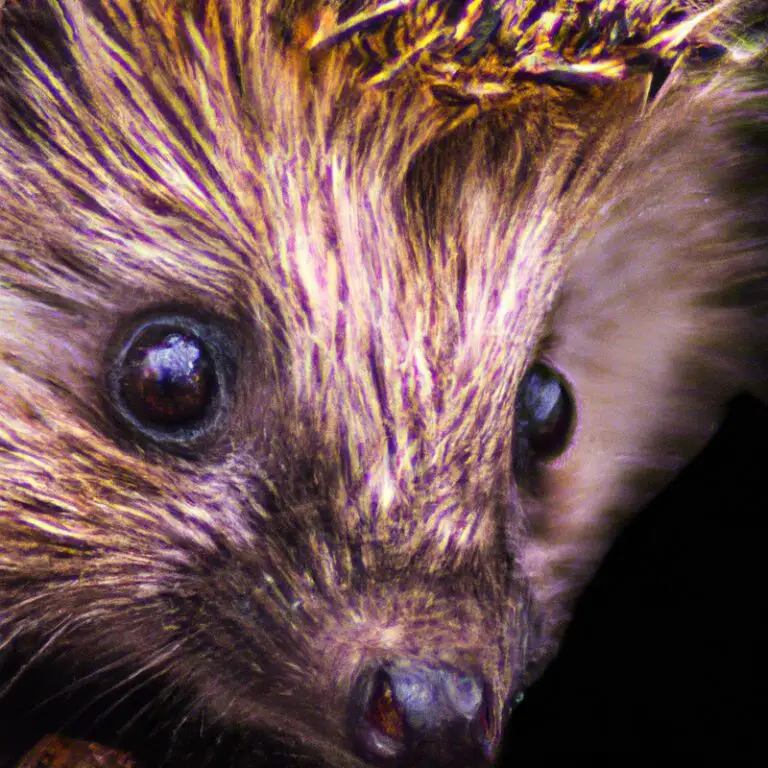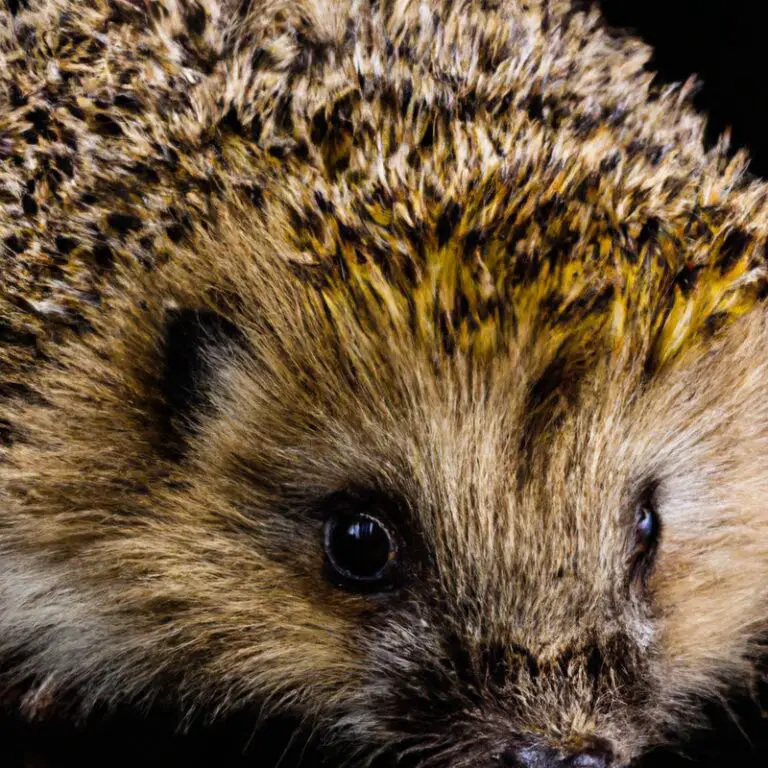What Is The Role Of Hedgehogs In Reducing Pest Damage To Crops?
Key Takeaways:
- Hedgehogs can be effective in reducing pest damage to crops by feeding on pests like slugs and insects.
- Their nocturnal behavior and ability to navigate different terrains make them suitable for pest control.
- Creating suitable habitats for hedgehogs near crops can enhance their role in natural pest management.
- Maintaining a balance between pesticide use and hedgehog populations is crucial for sustainable pest control in agriculture.
Are you tired of pests wreaking havoc in your crops?
Well, what if I told you there’s a prickly little hero that can come to the rescue?
Yes, I’m talking about hedgehogs! These adorable creatures are more than just cute garden visitors.
They play a crucial role in reducing pest damage to crops.
But how exactly do they do it?
In this article, we’ll explore the fascinating world of hedgehogs and discover how they control pests naturally.
Get ready to learn about their diet, habitat, and the ecological benefits they bring to agricultural settings.
It’s time to embrace these spiky superheroes and unlock their potential in pest management!
| Hedgehogs’ Role in Reducing Pest Damage to Crops |
|---|
| Benefits |
| The presence of hedgehogs in agricultural fields can help control pest populations naturally, reducing the need for chemical pesticides. |
| Challenges |
| Hedgehogs may not be able to completely eliminate all pests and may also consume beneficial insects and earthworms. |
| Key Points |
| – Hedgehogs primarily feed on common crop pests like slugs, snails, and insects. |
| – Their foraging behavior helps reduce pest populations and minimize crop damage. |
| – Hedgehogs can provide an eco-friendly and sustainable approach to pest control in agriculture. |
The Role of Hedgehogs in Reducing Pest Damage to Crops
Hedgehogs play a vital role in reducing pest damage to crops.
Understanding Pest Damage to Crops
Pest damage to crops can result in significant losses for farmers. Understanding the impact pests can have on crops is essential for effective pest management.
Pests can cause physical damage to plants, such as chewing on leaves or burrowing into fruits.
They can also transmit diseases that can affect crop health. By recognizing the signs of pest damage, farmers can take appropriate measures to protect their crops and minimize losses.
Regular monitoring, early detection, and implementing integrated pest management strategies are key in mitigating pest damage to crops.
Introducing Hedgehogs
Hedgehogs are small, spiky mammals that play an important role in the ecosystem.
They are known for their ability to control pests, especially in gardens and farmlands.
Hedgehogs have a taste for slugs, snails, and other insects that can damage crops.
They can be introduced to an area by offering suitable habitats, such as leaf piles or hedgehog houses.
It’s important to create a welcoming environment for hedgehogs, as they provide a natural and effective solution to pest control.
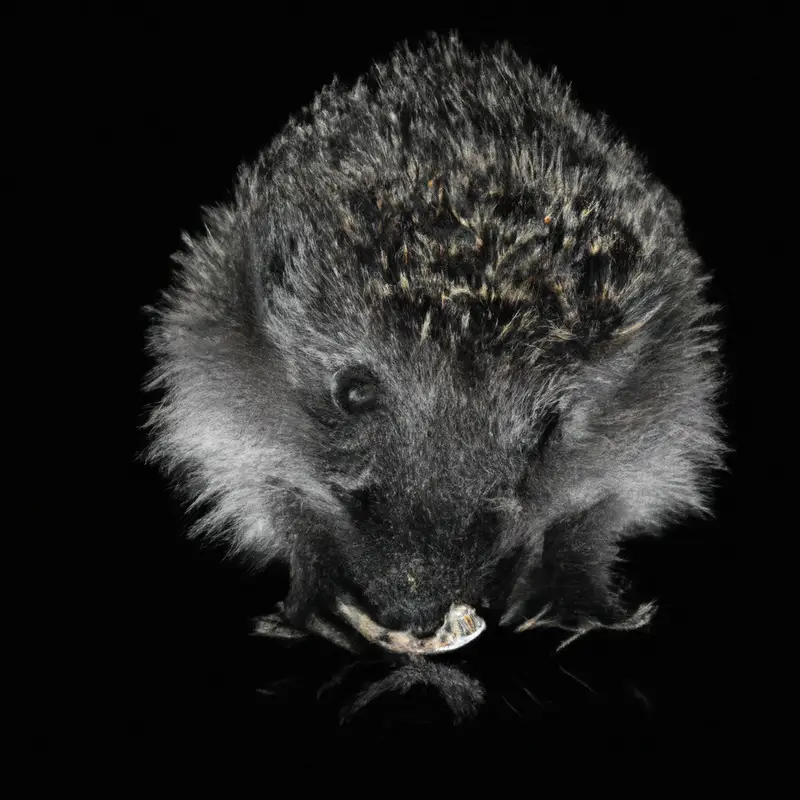
Hedgehogs as Natural Pest Controllers
Hedgehogs are natural pest controllers that help to reduce damage to crops.
Their diet consists mainly of insects, slugs, and snails, which are common pests in agricultural fields.
These spiky creatures play an important role in maintaining a balance in the ecosystem by keeping pest populations in check.
By preying on these pests, hedgehogs help to prevent crop damage and decrease the need for chemical pesticides.
Encouraging habitats that support hedgehogs can be an effective and environmentally friendly way to control pests in agricultural areas.

Hedgehogs’ Diet and Pest Preferences
Hedgehogs’ Diet and Pest Preferences: Hedgehogs have a diverse diet that includes both plants and animals.
As insectivores, they primarily eat insects like beetles, caterpillars, and slugs.
These creatures are considered pests as they can cause damage to crops.
Hedgehogs also consume small rodents, frogs, and birds, further contributing to pest control.
While they may occasionally snack on fruits and berries, their preference for pests makes them valuable allies in reducing crop damage.
By naturally targeting and feasting on these pests, hedgehogs play an important role in maintaining a healthy ecosystem and protecting agricultural yields.
Ecological Benefits of Hedgehogs in Agriculture
Hedgehogs play an important role in agriculture by providing ecological benefits. Here’s why:
- Pest control: Hedgehogs have a voracious appetite for common agricultural pests such as slugs, snails, and insects. By feeding on these pests, they help to naturally manage populations and reduce the need for chemical pesticides.
- Soil health: Hedgehogs dig through the soil in search of food, aerating it in the process. This improves soil fertility and structure, benefiting crop growth.
- Seed dispersal: Hedgehogs consume fruits and berries, and their droppings contain undigested seeds. This helps to disperse seeds across fields, contributing to plant diversity and regeneration.
- Biodiversity support: Hedgehogs are part of the ecosystem and their presence attracts other beneficial species. They provide a food source for predators like owls and foxes, which helps to maintain a balanced ecosystem.
Overall, incorporating hedgehogs into agricultural landscapes can have positive impacts on pest management, soil health, plant diversity, and biodiversity.
Research and Studies on Hedgehogs’ Impact on Pest Control
Research and studies have shown that hedgehogs play an important role in pest control. They primarily feed on insects, slugs, and other garden pests, helping to reduce their populations.
Hedgehogs are particularly effective in controlling pests that damage crops, such as snails and beetles.
These small spiky mammals are natural predators and have been found to significantly reduce pest damage in agricultural areas. Several studies have indicated that having hedgehogs present can lead to healthier and more productive crops, making them a valuable asset in pest management strategies.
Creating Hedgehog-Friendly Environments in Agricultural Settings
Creating a hedgehog-friendly environment in agricultural settings is an important step towards promoting natural pest control. Here are some ways you can help hedgehogs thrive on your farm:
- Provide shelter: Create hedgehog houses or leave natural areas where hedgehogs can find shelter and hibernate during the winter.
- Ensure access to water: Place shallow dishes of water throughout your farm to provide hedgehogs with a source of hydration.
- Avoid chemical use: Minimize the use of pesticides and herbicides on your crops, as they can harm hedgehogs and deplete their prey populations.
- Preserve hedgerows: Maintain existing hedgerows or plant new ones to provide hedgehogs with protected corridors and foraging opportunities.
- Reduce or remove barriers: Install hedgehog-friendly fencing or remove obstacles like netting, as these can trap or injure hedgehogs.
Remember, creating a hedgehog-friendly environment not only benefits these adorable creatures but also helps control pests naturally, reducing the need for harmful chemicals on your farm.
Challenges and Solutions for Integrating Hedgehogs in Pest Management
Integrating hedgehogs in pest management poses certain challenges, but there are solutions available. One challenge is ensuring hedgehogs have suitable habitats in agricultural areas.
This can be addressed by creating hedgehog-friendly spaces such as hedgerows and avoiding the use of pesticides harmful to hedgehogs.
Another challenge is promoting hedgehog awareness among farmers and providing information on the benefits of hedgehogs in pest control. By addressing these challenges, we can fully utilize hedgehogs as effective allies in managing pests in crops.
Frequently Asked Questions
Frequently Asked Questions:
1. How do hedgehogs help reduce pest damage to crops?
Hedgehogs are natural pest controllers.
They eat a variety of insects and small pests that can damage crops, such as slugs, beetles, and caterpillars.
By keeping the pest population in check, hedgehogs contribute to a healthier and more productive environment for crops.
2. Are hedgehogs effective at controlling pests?
Yes, hedgehogs are quite effective at controlling pests.
They have a strong appetite for many common crop-damaging pests.
Research has shown that areas with hedgehogs present tend to have lower pest populations and less damage to crops than areas without them.
3. Can I attract hedgehogs to my garden to help with pest control?
Absolutely! Creating hedgehog-friendly habitats in your garden can attract these adorable creatures.
Providing shelter, food, and a safe environment will encourage hedgehogs to visit and stay.
Offering hedgehog-friendly food, such as meat-based pet food or mealworms, can also help attract them.
4. What are some signs that hedgehogs are present in my garden?
Look out for signs like small droppings, tracks, or hedgehog nests in your garden.
Hedgehogs might also leave behind holes or disturbances in the soil as they search for food.
Seeing hedgehogs themselves, particularly during nighttime, is another telltale sign.
5. How can I ensure hedgehogs remain safe in my garden?
To keep hedgehogs safe, ensure there are no hazardous obstacles like open drains or deep ponds in your garden.
Avoid using pesticides or chemicals that could harm them or their food sources.
Additionally, check carefully before mowing your lawn or clearing any vegetation, as hedgehogs may be nesting in these areas.
Remember, hedgehogs are valuable allies in naturally controlling pests in your garden.
By creating a welcoming environment and taking precautions for their safety, you can benefit from their pest control abilities and enjoy the presence of these charming creatures.
Understanding Pest Damage to Crops
Pest damage to crops refers to the harm caused by various organisms that feed on or damage crops, such as insects, rodents, and diseases.
This damage can significantly impact crop yields and result in economic losses for farmers.
Definition and types of pests that commonly damage crops.
Pests are organisms that cause damage to crops, resulting in financial losses for farmers and decreased food production.
Common types of crop pests include insects like aphids, beetles, and caterpillars, as well as rodents such as mice and rats.
Fungal pathogens and weeds can also be considered pests since they compete with crops for essential resources.
It is important to understand these pests in order to develop effective strategies for their management and minimize crop damage.
Conventional methods of pest control and their limitations.
Conventional methods of pest control, such as chemical pesticides, have limitations. First, they can harm beneficial insects and organisms.
Second, pests can develop resistance over time, rendering the pesticides ineffective.
Third, chemical residues can remain on crops, posing health risks to consumers and the environment. Additionally, these methods often require repeated application, leading to increased costs and environmental impact.
As a result, finding sustainable alternatives that minimize these limitations is important for crop protection.
Introducing Hedgehogs
Hedgehogs are small, spiky mammals known for their distinctive appearance and nocturnal habits.
They can be found in various regions around the world, offering natural pest control solutions for crops.
Description and characteristics of hedgehogs.
Hedgehogs are small, spiky mammals that are known for their distinctive appearance.
They have short limbs, a round body covered in sharp spines, and a pointed snout.
Hedgehogs are primarily nocturnal animals, meaning they are most active during the night.
They are omnivores, which means they eat a variety of foods including insects, worms, small vertebrates, and even some plant matter.
Hedgehogs have excellent hearing and sense of smell, which helps them find their prey.
They also have a unique defense mechanism, where they roll into a tight ball to protect themselves from predators.
Hedgehogs are solitary creatures and typically prefer to live alone.
They can be found in various habitats, including gardens, woodlands, and grasslands.
Habitat and natural behavior of hedgehogs.
Hedgehogs are nocturnal creatures that prefer to live in habitats with plenty of vegetation, such as woodlands, gardens, and hedgerows.
They build nests using leaves and twigs to create a cozy space for themselves.
Hedgehogs have a diet that primarily consists of insects, such as beetles, slugs, and worms, which they find by using their keen sense of smell.
They are solitary animals and tend to roam around their territory at night in search of food.
If they feel threatened, they will curl up in a ball and rely on their spiky quills for protection.
Distribution of hedgehogs in different regions.
Hedgehogs are found in various regions around the world.
They are native to Europe, Asia, and Africa, but have also been introduced to New Zealand.
In Europe, they can be found in countries like the United Kingdom, France, and Germany.
In Asia, hedgehogs are commonly found in countries such as India, China, and Japan.
In Africa, they can be found in countries like Egypt, Sudan, and South Africa.
Each region has its own unique populations and habitats for hedgehogs to thrive in.
Hedgehogs as Natural Pest Controllers
Hedgehogs play a vital role in controlling pests naturally in agricultural settings.
Explanation of how hedgehogs help control pests in agricultural settings.
Hedgehogs can be valuable allies in agriculture as natural pest controllers. They have a voracious appetite for garden pests like slugs, snails, and insects, which can wreak havoc on crops.
Hedgehogs are particularly effective in reducing slug populations, as slugs are a major threat to various plants.
Their diet helps balance ecosystem, reducing the need for synthetic pesticides. Creating habitat with hedgehog-friendly areas, such as log piles and wildflower banks, can encourage these prickly creatures to set up residence in agricultural landscapes and assist in pest control efforts.
Their nocturnal habits make them active during peak pest activity times, providing continuous pest management through their feeding habits.
By naturally controlling pests, hedgehogs contribute to a more sustainable and environmentally friendly agricultural system.
Role of hedgehogs in regulating pest populations through predation.
Hedgehogs play a crucial role in regulating pest populations through predation.
They are natural predators of insects, slugs, snails, and other small pests that can damage crops.
Hedgehogs help to control these pests by hunting and consuming them.
Their diet consists of a wide range of insects and invertebrates, making them effective at reducing pest numbers in agricultural settings.
As hedgehogs are nocturnal animals, they actively forage for pests during the night, making them valuable allies in pest management.
By supporting hedgehog populations, farmers can benefit from their pest control services and reduce the reliance on chemical pesticides.
Comparison of hedgehogs with other natural pest control methods.
Hedgehogs offer a unique approach to natural pest control. Unlike other methods, they can specifically target garden pests like slugs, snails, and insects.
They are efficient and low-maintenance, as they naturally roam and forage for food.
Hedgehogs also have a positive impact on the ecosystem and don’t require any additional resources. In comparison to other natural pest control methods, hedgehogs provide a sustainable and self-sufficient solution.
Hedgehogs’ Diet and Pest Preferences
Hedgehogs have a diverse diet that includes insects, mollusks, worms, and small vertebrates, which helps them control pests in fields and gardens. They particularly focus on eating pests like slugs, snails, and beetles.
Overview of hedgehogs’ diet and feeding habits.
Hedgehogs have a varied diet, consisting of insects, worms, slugs, snails, and occasional fruits. They are primarily insectivorous, feasting on beetles, caterpillars, and other small invertebrates.
Hedgehogs use their sharp teeth and strong jaws to catch and consume their prey.
They are also known to eat fruits, such as berries and apples, to supplement their diet. Hedgehogs are beneficial to gardens and crops as they help control pests like slugs and snails, reducing potential damage to plants.
Identification of pests that hedgehogs are particularly effective at controlling.
Hedgehogs are great allies in pest control! They have a hearty appetite for insects and other pests that can damage crops.
Some of the pests that hedgehogs are particularly effective at controlling include slugs, snails, beetles, caterpillars, and even small rodents.
These critters can wreak havoc on gardens and crops, but hedgehogs are natural predators that help keep their populations in check.
So, if you have a hedgehog in your garden, consider it a valuable helper in protecting your plants.
Factors influencing hedgehogs’ preference for different pests.
Hedgehogs’ preference for different pests is influenced by several factors:
- Size and accessibility of the pest: Hedgehogs tend to prefer smaller pests that are easier to catch and consume.
- Nutritional value: Hedgehogs are more likely to target pests that provide a higher nutritional benefit, such as those rich in protein or fat.
- Taste and scent: Certain pests may have a more appealing taste or emit an odor that attracts hedgehogs.
- Availability and abundance: Hedgehogs are more likely to target pests that are readily available and abundant in their environment.
- Seasonal variations: Hedgehogs’ preferences may change depending on the time of year and the availability of specific pests.
Understanding these factors can help researchers and farmers develop strategies to promote hedgehog populations and utilize their natural pest control abilities.
Ecological Benefits of Hedgehogs in Agriculture
Hedgehogs provide important ecological benefits in agriculture, promoting biodiversity and maintaining ecological balance.
They also contribute to soil health and nutrient cycling, benefiting the overall health of agricultural ecosystems.
Explanation of the broader ecological benefits of hedgehogs in agricultural ecosystems.
Hedgehogs provide a range of ecological benefits in agricultural ecosystems.
They help control pest populations by consuming insects, slugs, and snails that can damage crops.
This natural form of pest control reduces the need for chemical pesticides, benefiting both the environment and human health.
Additionally, hedgehogs contribute to soil health by aerating the soil as they dig for food, improving its structure and nutrient cycling.
Their presence in agricultural landscapes promotes biodiversity and creates a more balanced ecosystem, which ultimately supports sustainable agriculture.
Role of hedgehogs in promoting biodiversity and maintaining ecological balance.
Hedgehogs play a crucial role in promoting biodiversity and maintaining ecological balance. They are natural predators of many pests that can damage crops and gardens, such as slugs, snails, and insects.
By keeping these populations in check, hedgehogs help to prevent overgrazing and the spread of diseases.
Additionally, their foraging activities help to aerate the soil, improving its fertility. By providing habitat and protecting hedgehogs, we can support a healthier and more diverse ecosystem.
Impact of hedgehogs on soil health and nutrient cycling.
Hedgehogs play a small but significant role in maintaining soil health and nutrient cycling.
As they move through the soil, they aerate it, improving its structure and allowing water and nutrients to penetrate more easily.
Their droppings are also rich in nutrients, acting as natural fertilizers for plant growth.
Additionally, hedgehogs consume insects and other pests that can harm crops, reducing the need for chemical pesticides.
This natural pest control helps to preserve the balance of the ecosystem and promotes healthier soil for agricultural productivity.
Research and Studies on Hedgehogs’ Impact on Pest Control
Scientific research and studies have explored the effectiveness of hedgehogs as pest controllers.
Discussion of scientific research and studies that have explored the effectiveness of hedgehogs as pest controllers.
Various scientific research and studies have examined the effectiveness of hedgehogs as pest controllers. One study found that hedgehogs consume a wide range of pest insects, including slugs and snails, which can cause damage to crops.
Another study observed that areas with higher hedgehog populations had reduced pest levels and less crop damage.
Additionally, researchers have found that the presence of hedgehogs can also deter pests due to their scent and behavior. These findings suggest that hedgehogs can play a valuable role in reducing pest damage to crops.
Findings and conclusions from these studies.
The studies on hedgehogs’ impact on pest control have provided valuable insights.
Researchers found that hedgehogs play a significant role in reducing pest damage to crops.
They actively prey on insects and small rodents that can harm plants.
Additionally, the presence of hedgehogs can discourage pests from entering farmland, acting as a natural deterrent.
Overall, these studies conclude that hedgehogs can be a beneficial addition to agricultural ecosystems, contributing to sustainable pest management strategies.
Areas where further research is still needed.
Further research is needed to better understand the specific impact of hedgehogs on pest populations and crop damage. Specifically, more investigation is required to determine the effectiveness of hedgehogs in reducing various types of pests and the optimal density of hedgehogs needed for effective pest control.
Additionally, studies are needed to determine the long-term effects of hedgehog predation on pest populations and the potential interactions between hedgehogs and other pest control methods.
Overall, further research will provide valuable insights into maximizing the role of hedgehogs in reducing pest damage to crops.
Creating Hedgehog-Friendly Environments in Agricultural Settings
Create welcoming habitats for hedgehogs on your agricultural property to support their presence and help reduce pest damage to your crops.
Tips and strategies for farmers and landowners to attract and support hedgehogs on their property.
If you’re a farmer or landowner looking to attract and support hedgehogs on your property, here are some tips and strategies to consider:
- Create hedgehog-friendly habitats by providing safe areas for nesting. Leave patches of longer grass, shrubs, and hedges for them to hide and build nests in.
- Install hedgehog houses or boxes in suitable areas to provide additional shelter for hedgehogs during the day and winter months.
- Avoid using pesticides and chemicals on your land, as these can harm hedgehogs and their food sources.
- Create access points through fences or boundaries, such as small holes or gaps, to allow hedgehogs to move freely between different areas.
- Provide a water source, such as a shallow dish, for hedgehogs to drink from.
- Ensure there are plenty of insects, slugs, and snails for hedgehogs to feed on by adopting wildlife-friendly farming practices.
- Educate and inform others about the importance of hedgehogs and their role in reducing pest damage to crops.
Remember, creating a hedgehog-friendly environment involves making small changes that can have a big impact on supporting these beneficial creatures.
Designing hedgehog-friendly habitats in agricultural landscapes.
To design hedgehog-friendly habitats in agricultural landscapes, there are a few simple steps you can take. Start by creating long grassy areas where hedgehogs can find shelter and forage for food.
Avoid using pesticides and chemical fertilizers, as these can harm hedgehogs and their food sources.
Provide water sources such as shallow dishes or ponds. Install hedgehog-friendly fencing with gaps at the bottom to allow them to move freely.
Finally, consider leaving areas of your land undisturbed to provide additional habitats for hedgehogs.
These small changes can make a big difference in supporting hedgehog populations in agricultural areas.
Importance of maintaining biodiversity and natural habitats to support hedgehogs.
Maintaining biodiversity and natural habitats is vital for supporting hedgehogs.
Hedgehogs rely on a diverse range of plant and insect species for food and shelter.
By preserving natural environments, we provide hedgehogs with suitable habitats where they can find plenty of food sources and safe places to rest and hibernate.
Additionally, biodiversity helps create a balanced ecosystem, with natural predators and prey populations that help control pests, reducing the need for chemical interventions in agricultural settings.
In other words, by protecting biodiversity, we indirectly help reduce pest damage to crops.
Challenges and Solutions for Integrating Hedgehogs in Pest Management
Identifying challenges and finding solutions for incorporating hedgehogs into pest management.
Identification of challenges and barriers to using hedgehogs as part of integrated pest management strategies.
One challenge in using hedgehogs for pest management is their limited availability in certain regions.
Additionally, their nocturnal behavior can make it difficult to observe their impact on pests during the day.
Hedgehogs also require safe habitats and access to suitable food sources.
Finally, the potential risks to hedgehogs from pesticides used in conventional pest management practices need to be carefully considered.
Potential solutions and strategies to overcome these challenges.
To overcome the challenges of integrating hedgehogs in pest management, there are a few potential solutions and strategies that can be considered:
- Creating hedgehog-friendly habitats: Providing suitable shelter, food sources, and water for hedgehogs can encourage their presence in agricultural areas and enhance their effectiveness in controlling pests.
- Minimizing pesticide use: Reducing the use of pesticides or adopting alternative methods like organic farming can help maintain a healthy ecosystem for hedgehogs, enabling them to thrive and contribute to pest management.
- Implementing wildlife corridors: Designating corridors or connecting green spaces can facilitate the movement of hedgehogs between different areas, allowing them to access fields and crops where pests are present.
- Raising awareness and education: Educating farmers, landowners, and the general public about the benefits of hedgehogs in pest control can foster support and encourage the adoption of hedgehog-friendly practices.
- Collaboration between stakeholders: Encouraging collaboration between farmers, conservation organizations, and researchers can lead to the development of effective strategies for integrating hedgehogs into pest management.
By considering these solutions and strategies, we can work towards harnessing the natural pest control abilities of hedgehogs and reducing pest damage to crops in a sustainable and eco-friendly manner.
Collaboration between farmers, conservation organizations, and researchers.
Collaboration between farmers, conservation organizations, and researchers plays a vital role in pest management. Farmers provide valuable insights on pest challenges and crop requirements.
Conservation organizations offer expertise in environmental protection and wildlife conservation.
Researchers contribute scientific knowledge and innovative solutions. Together, they can develop sustainable and effective strategies to minimize pest damage to crops while preserving biodiversity.
This collaboration ensures a holistic approach, promotes knowledge exchange, and enhances the overall success of pest management efforts.
Frequently Asked Questions
Common questions about hedgehogs and their role in pest control.
Hedgehogs play a valuable role in pest control, particularly in the garden and agricultural settings.
Here are some common questions people have about hedgehogs and their role in keeping pests at bay:
1. Do hedgehogs eat pests?
Yes, hedgehogs have a diet that consists of insects, slugs, snails, and other small creatures that are often considered pests in gardens and crops.
They can help reduce pest populations naturally.
2. How effective are hedgehogs in controlling pests?
While hedgehogs alone may not completely eliminate pests, they can significantly reduce their numbers.
Their appetite for insects and other pests helps keep them in check, especially in smaller areas like gardens.
3. Are hedgehogs harmful to crops?
No, hedgehogs don’t pose a threat to crops.
They primarily feed on insects and pests that harm crops, making them beneficial for agricultural settings.
4. Can hedgehogs be encouraged to stay in gardens or farms?
Yes, you can create hedgehog-friendly environments by providing shelter, such as log piles or hedgehog houses, and leaving out food and water.
This can attract hedgehogs and encourage them to stay, helping with pest control.
5. Are there any precautions to take when attracting hedgehogs for pest control?
To ensure the safety of hedgehogs, avoid using harmful pesticides and chemicals in your garden or farm.
Also, check for any hazards, such as uncovered drains or deep water features, that could harm them.
Answers to these questions based on the information provided in the blog.
In terms of reducing pest damage to crops, hedgehogs play a crucial role. They are natural predators of many garden pests such as slugs, snails, and insects.
By eating these pests, hedgehogs help to control their populations and minimize the damage they can cause to crops.
Additionally, hedgehogs can provide a form of natural pest control without the need for chemical interventions. Therefore, encouraging hedgehogs to inhabit agricultural areas can be beneficial for crop protection.
Final Verdict
Hedgehogs play a crucial role in reducing pest damage to crops, offering a natural and sustainable solution to agricultural challenges. Their diet consists of a wide variety of pests, making them effective and efficient predators.
By controlling pest populations, hedgehogs contribute to increased crop yields and reduced economic losses.
Research and studies have shown the positive impact of hedgehog predation on pest control. Creating hedgehog-friendly environments in agricultural settings can further support their presence.
Overcoming challenges and integrating hedgehogs into pest management strategies requires collaboration and understanding between farmers, conservation organizations, and researchers.
By harnessing the power of these adorable yet formidable creatures, we can enhance ecological balance, promote biodiversity, and achieve a more sustainable and resilient agriculture system.

